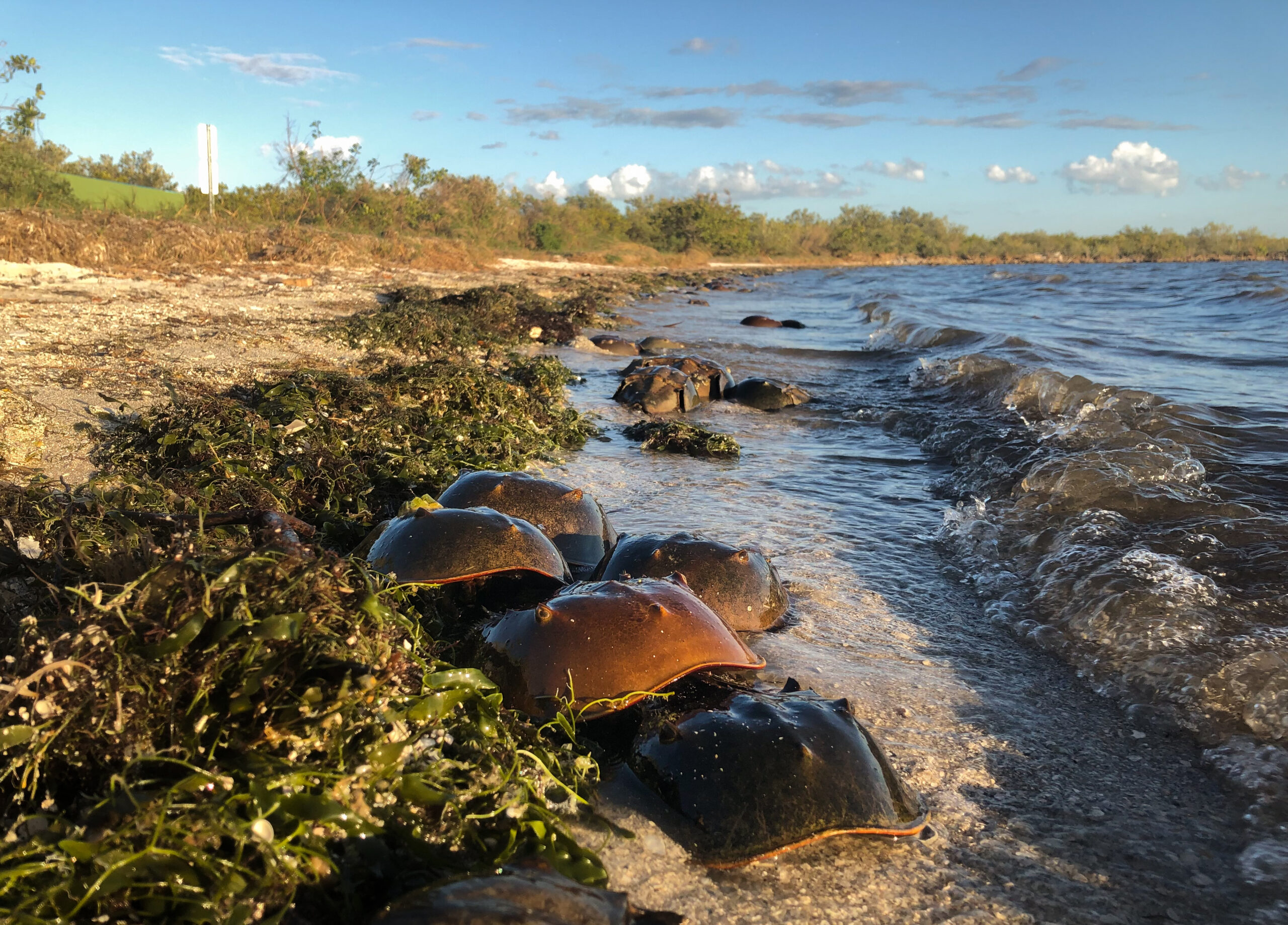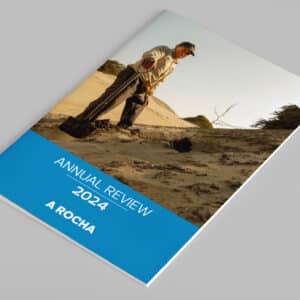In the Indian River Lagoon, a heron vaults from the shallows, while anhingas dry their wings on the rocks. Shads, minnows, sardines and killifish pierce the water like darts. As mullets leap, rays stir the sand with their ghostly glide, and comb jellies drift about like lozenges of blown glass. Flowing down the east coast of Florida, USA in roughly the shape of a dragonfly’s wing, the Indian River Lagoon harbours about 4,000 plant and animal species, making it the most biodiverse estuary in North America.
If you kayak on a summer evening, you can see the lagoon limned with nebulas of phytoplankton casting a blue light. On certain beaches in the winter – when the wind or tides are right – thousands of ancient-looking horseshoe crabs will swarm. In A Rocha USA’s study area, which only covers a northern portion of the lagoon, at least 3,065 species have been spotted.

Unfortunately, the lagoon ecosystem has suffered many blows in recent decades. According to a 2022 study in Frontiers in Marine Science, the lagoon lost about 19,000 acres (about 58%) of its remaining seagrass between 2011 and 2019 (Morris et al., ‘Seagrass in a Changing Estuary’). Meanwhile, development projects continue to fragment the lagoon’s habitats, and inputs from wastewater and stormwater wreck the water quality, contributing to the decline of oysters, pipefish, stingrays, and many other creatures.
In a biodiversity report on the Northern Indian River Lagoon (NIRL), A Rocha USA identified 23 marine species with an IUCN Red List status of ‘Near Threatened’ or worse, as well as ‘Data Deficient,’ which means that the creature hasn’t been studied enough to get an official ranking. Some of these species tend to be more popular than others – even among scientists. In a survey of NIRL-related research papers, most of the 23 species of interest appeared in just three studies or less, whereas the charismatic manatee appeared in about sixteen. Four species had no NIRL studies at all. Many of these under-studied creatures could play vital roles in their ecosystems, but we don’t even have enough data to understand them, let alone advocate for their protection.
In total, A Rocha USA identified six species of conservation concern that are under-studied and bereft of legal protection: the Blueback Herring, Bluntnose Ray, Cownose Ray, Smooth Butterfly Ray, Southern Stingray and False Killer Whale. Similarly, two species – the Tropical Flounder and Whitefin Sharksucker – are listed as ‘Data Deficient’ yet lack any regulations on their killing or capture. All these creatures deserve our attention. Without more research, we won’t know the full impact of any potential decline or extinction of these species, and we may inflict even greater damage on the Indian River Lagoon than we already have.
The more biodiversity an ecosystem has, the healthier it is, and the more benefits it offers human beings. Creatures like the Butterfly Ray or the Whitefin Sharksucker could be crucial for maintaining the health of the Northern Indian River Lagoon. Beyond that, we also want to protect them for their own sake, regardless of how useful they may be.
God never asked creation to earn divine love. On the day each animal was made, before they’d done much of anything, God deemed them good, blessing them to ‘be fruitful and multiply’. As a mother loves her child from the day of their birth, so God loves every creature, in all their colour, ferocity and diversity.
Learn more about A Rocha USA’s marine conservation work in Florida at arocha.us/florida



